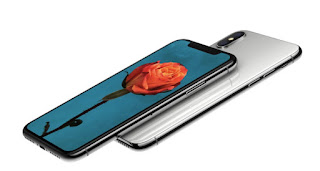Showing posts with label mobile network. Show all posts
Showing posts with label mobile network. Show all posts
Don't keep your phone in your pocket, cell phone radiation is bad for you
The jury did not yet reveal whether cellphone radiation was bad or not, but the California public health department did not take any chances. The agency just issued an advisory that suggests residents should take steps to reduce their exposure to cellphones. The report suggests avoiding phone use once uncalled-for, notably once the cellphone signal is likely to kick into overdrive (such as when you are in a weak coverage area or streaming video). This also advises that you keep your cellphone away from your body, DPH director Dr. Karen Smith also says, "You do not keep your phone in your pocket."
Following the release of CDPH findings from 2009, which were prompted by a lawsuit from UC Berkeley professor Joel Moskowitz in his bid to explore possible links between cell-phone use and increased risks of cancer. He believes that cell-phone radiation poses a "big risk." other agencies, like Connecticut's own Department of Public Health, have put out similar recommendations.
The CTIA wireless industry group, that has historically opposed attempts to raise public concerns over cell-phone radiation, is not taking a definitive stance. in a statement, the CTIA said that health was "important" to its members and that people should "consult the experts."
It's a bold move when some of the companies that dominate the cellphone landscape are based in California. The question is whether or not the advisory will make a difference. without a definitive link between phone use and health issues, the statement may not carry much weight. And let's face it, telling people to stop using smartphones as they normally do (especially in California) is like telling them to stop breathing. There would have to be a clear risk to make everyone give up devices that have quickly become staples of modern life.
Labels:
Health & Fitness,
mobile,
mobile network,
Smartphone
Project Loon cleared to assist restore wireless in Puerto RICO - My Page
Project Loon — the balloon delivered net project that started life as a part of Google and currently calls Alphabet’s X “innovation lab” home — has moved one step nearer to becoming a part of the relief efforts in Puerto RICO. The FCC has issued an “experimental license” for it to provide emergency cellular LTE service. during a statement, an X spokesperson explained that the next step is to integrate with a telco partner’s network, that it’s “making solid progress on.”
More tech News Visit : webserveu.com
On September twenty ninth the X team same it was looking into ways to assist Puerto RICO with Project Loon, similar to the approach it helped give service in Peru after extreme rains and flooding struck the state in March. However, Loon had already been testing with Telefonica in Peru, that sped up the process.
In a report issued yesterday (PDF), the FCC said 83 % of cell sites in Puerto RICO are still out of service, along with 57 % within the us Virgin Islands and 100% in St. John. It also took the step of creating its hurricane Recovery Task Force that will work on restoring services to the islands.
The #ProjectLoon team at X is exploring if it’s possible to bring emergency connectivity to Puerto Rico. Read more https://t.co/atroBWeTGv— The Team at X (@Theteamatx) September 29, 2017
BREAKING: FCC issues experimental license to Google to provide emergency cellular service in Puerto Rico through Project Loon balloons.— Matthew Berry (@matthewberryfcc) October 6, 2017
BREAKING: FCC issues experimental license to Google to provide emergency cellular service in Puerto Rico through Project Loon balloons.— Matthew Berry (@matthewberryfcc) October 6, 2017
More tech News Visit : webserveu.com
Iphone X and 8 support B66, no B71 support | T-Mobile simply got burned by Apple and the iPhone X
 |
| T-Mobile just got burned by Apple and the iPhone X |
Right now, T-Mobile is in the early stages of rolling out a new 600MHz network nationwide. the 1st sites are already on-line, and T-Mobile is expecting to cover a million sq. miles by the end of 2017. however the 600MHz network uses a new LTE channel, Band 71, and extremely few devices support it yet. Sadly for T-Mobile, you can’t add the iPhone 8 or iPhone X to that list.
The specs page for the iPhone X confirms that it supports all the standard North american LTE bands, but not Band seventy one. but you frame this, it’s a blow for T-Mobile. The iPhone X is wide expected to spark an upgrade “super-cycle” which will see people on the iPhone six and 6S spring for the upgrade, since they’re shopping for a phone that they expect to last for years. That phone — expected to last for at least 2 years — won’t be compatible with the LTE band that T-Mobile is expecting to be the backbone of its network going forwards.
Compatibility with 600MHz can become a big deal for T-Mobile customers, assuming you wish really using your phone when you’re out and regarding. Lower frequencies travel more and penetrate buildings better, which all adds up to superior coverage, especially within buildings or in rural areas. Verizon has relied heavily on its 700MHz spectrum for years, and it’s a big a part of the explanation it keeps winning coverage awards. T-Mobile’s 600MHz network promises to be even as smart or better, but you can solely take advantage of it if your phone is compatible. 600MHz compatibility is barely going to get additional necessary as time goes on. T-Mobile is planning on having 600MHz coverage over 1,000,000 sq. miles by the end of this year, and by the end of 2018, it'll play a big half in its national coverage — unless you have got an iPhone X.
There’s no doubt in my mind that T-Mobile needed the iPhone X to support Band seventy one. CTO Neville Ray told me last month that T-Mobile is putting “as much, if no more effort into devices than the network” — and that’s a big statement, because T-Mobile is functioning hard on rolling out 600MHz. however T-Mobile only secured the 600MHz licenses in an auction early this year, that probably wasn’t enough interval to create band seventy one into the iPhone X’s modem.
But whichever way you cut it, this isn’t nice news for T-Mobile. It’s going into 2018 with only 1 flagship phone with B71 support, and that’s the LG V30, which is that the most niche phone that I’d think about a standard flagship. The Galaxy S9 can virtually positively have B71 support, however we’ll be waiting till next year for an Apple phone that includes it. Worse, anyone who buys an iPhone right now and needs to change in six months won’t have the advantage of T-Mobile’s full LTE network. That’s not going to do a lot of for T-Mobile’s PR campaign to have the most effective network.
In short: if you’re buying an iPhone 8 or iPhone X, you most likely shouldn’t go with T-Mobile. If you do, I’d go for a lease, rather than shopping for the phone on an instalment plan. That way, when the iPhone X2 shows up next year, you’ll be able to jump ship.
Labels:
mobile,
mobile network,
Software,
Technology,
USA
Xiaomi’s Mi A1 is a flagship Android One phone for India
Xiaomi has announced the Mi A1, a new flagship phone largely focused on the Indian market with the tagline of “created by Xiaomi, powered by Google.” It has a 5.5-inch 1080p screen, a metal body, and a dual-camera system that includes a secondary telephoto lens for 2x zooming and portraits with shallow depth of field.
If that sounds familiar, well, Xiaomi isn’t shy about it:
Like the near-identical Mi 5X announced for China recently, the Mi A1 has Qualcomm’s increasingly ubiquitous Snapdragon 625 processor — which we’ve found to strike a great balance between performance and battery life — and a fairly standard 3080mAh battery. The phone charges over USB-C, unlike Xiaomi’s more budget-orientated offerings, and the company is even including a custom 380V charger that it says is designed to handle India’s frequent power spikes.
But the Mi A1’s most distinctive feature is its software: it runs stock Android, not Xiaomi’s own MIUI layer, and is part of Google’s Android One program. Android One launched three years ago with a focus on India as Google aimed to codify the Android experience for low-end smartphones. It hasn’t been a huge success, but Google undoubtedly wants to expand the program to a wider range of products to ensure that people continue to have access to the latest versions of its software and services.
To that end, the Mi A1 will get Android Oreo by the end of the year, and Xiaomi says it’ll be “one of the first” phones to get Android P — which we haven’t heard anything about — in 2018.
Subscribe to:
Comments (Atom)



